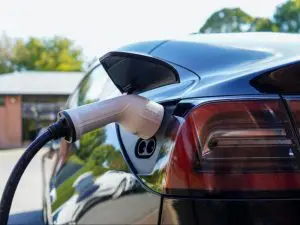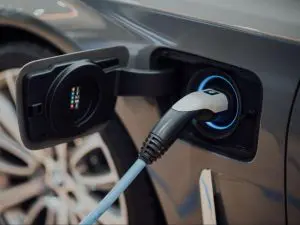Severe weather can strike without warning, and when it does, it often brings with it a range of dangers, including power surges. These surges can be devastating to your home’s electrical systems and appliances. Understanding emergency surge protection and implementing effective measures can safeguard your home and your electronics during stormy weather. This guide will explore what surge protection is, the causes of power surges, methods to protect your home, and tips for maintaining that protection.
Understanding Power Surges
A power surge is a sudden increase in voltage that can overwhelm electrical systems. Normal household voltage is around 120 volts, but surges can cause voltage spikes that far exceed this level, potentially reaching up to 1,000 volts. These surges can last for only a few microseconds but can have catastrophic effects on electrical devices.
Common Causes of Power Surges
- Lightning Strikes: One of the most dangerous sources of power surges, lightning can strike power lines and create massive voltage spikes that travel through the electrical system.
- Downed Power Lines: Storms can bring down power lines, leading to unstable electrical distribution and sudden surges.
- Faulty Wiring: Aging or damaged wiring in your home can lead to electrical imbalances and surges.
- Large Appliances: Appliances that draw a significant amount of power, such as refrigerators, air conditioners, and heating systems, can cause surges when they turn on or off.
- Utility Company Issues: Problems within the power grid or the utility company’s distribution can cause fluctuations and surges.
The Importance of Surge Protection
The impact of power surges can be severe. They can damage or destroy electronic devices, appliances, and even the electrical system of your home. Our friends at John Moore have provided us with some reasons why it is important to have surge protection:
- Protect Electronics: Devices such as computers, televisions, and smart home systems are sensitive to voltage changes. A power surge can fry their circuits, leading to costly repairs or replacements.
- Preserves Appliance Lifespan: Protecting your major appliances can extend their lifespan and improve their efficiency, saving you money in the long run.
- Increases Safety: Overvoltage can lead to electrical fires, posing a risk to life and property. Effective surge protection minimizes this risk.
- Maintains Convenience: Surges can lead to outages and disruptions in your home. Protecting your system ensures that you can continue to use essential services, even during inclement weather.
Methods of Surge Protection
There are several strategies you can employ to protect your home from power surges, especially during storms.
1. Whole-House Surge Protectors
A whole-house surge protector is installed at your electrical panel and serves as the first line of defense against power surges. It can absorb and redirect excess voltage before it reaches your home’s wiring and devices. Here are some benefits of installing a whole-house surge protector:
- Comprehensive Coverage: It protects all electrical devices and systems in your home, including HVAC systems, water heaters, and built-in appliances.
- High Capacity: Whole-house surge protectors can handle larger surges, such as those caused by lightning strikes.
- Professional Installation: It’s advisable to have a licensed electrician install these systems to ensure they function correctly.
2. Point-of-Use Surge Protectors
In addition to whole-house surge protectors, point-of-use surge protectors can be used for individual devices. These devices plug into standard outlets and provide an additional layer of protection. Here are a few key points:
- Easy to Install: Simply plug them into an outlet and then connect your device.
- Variety of Options: They come in various forms, such as power strips with built-in surge protection and individual plug-in units.
- Indicator Lights: Many point-of-use protectors have indicator lights to show if they are functioning correctly.
3. Uninterruptible Power Supply (UPS)
A UPS is a device that provides backup power and surge protection. While it’s primarily used to keep devices running during a power outage, it also protects against surges. Key features include:
- Battery Backup: Provides temporary power to devices during outages, allowing you to save work and shut down safely.
- Surge Protection: Filters out surges and spikes, ensuring that only safe voltage reaches your devices.
- Ideal for Sensitive Electronics: Highly recommended for computers, gaming consoles, and other sensitive electronics.
4. Regular Maintenance
Regular maintenance of your electrical system can help prevent surges caused by faulty wiring or connections. Consider these maintenance tips:
- Inspect Wiring: Regularly check for signs of wear and tear in your home’s wiring, including frayed cords and loose connections.
- Schedule Professional Inspections: Hire a licensed electrician to inspect your electrical system periodically.
- Update Old Systems: If your home has old wiring or electrical panels, consider upgrading to modern systems designed to handle today’s electrical demands.
Preparing for Storms
In addition to surge protection, it’s essential to have a plan for storms and severe weather:
- Unplug Devices: During a storm, unplugging sensitive electronics can be an effective way to protect them from surges.
- Secure Outdoor Equipment: If you have outdoor electrical equipment, such as pool pumps or landscape lighting, ensure they are secure and turned off during storms.
- Have an Emergency Kit: Prepare an emergency kit that includes flashlights, batteries, and essential supplies in case of prolonged power outages.
Conclusion
Emergency surge protection is crucial for safeguarding your home and electronics during storms. By understanding the causes of power surges and implementing effective protective measures, such as whole-house surge protectors, point-of-use devices, and UPS systems, you can minimize the risk of damage. Regular maintenance and preparedness plans are also essential in ensuring that your home remains safe and functional during inclement weather. Investing time and resources into surge protection can lead to long-term savings, safety, and peace of mind for you and your family.



